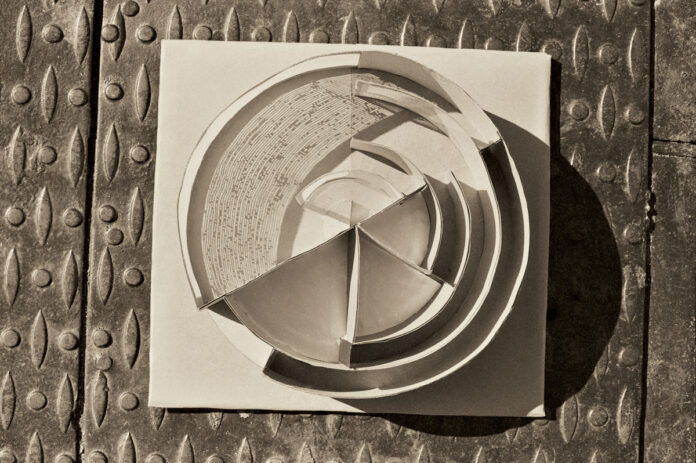Aimé Iglesias Lukin said in an interview that the work of art is as radical now as it was in the 70s. He noted that it’s free, public, and invites participation.
The late Brazilian artist Hélio Oititica dreamed of creating a large-scale open-air public installation for the city. The work was set outside the traditional arts institution. It meant to challenge what art can be by creating a space that would actively engage the public, inviting them to participate.
Hélio Oiticica, who died at the age of 42 in 1980, was never able to realize this work, titled Underground Tropical Projects (1971), a red tape of the New York bureaucracy that proved insurmountable for the renowned artist. He even created several scaled down versions of the original layered structure in the hope that somehow he could accomplish the feat.
Now, 51 years after the original concept, a scaled-down circular iteration of the PN15 will finally be implemented in another New York City park, the Socrates Sculpture Park in Queens. The installation is exhibited from May 14 to August 14.
The work marks the first major outdoor implementation of the Oiticica project in the US. The project is carried out jointly with the American Society on the Upper East Side and Projeto Hélio Oiticica, a foundation founded by the artist’s two brothers a year after his death.
The Lisson Gallery, representing the Hélio Oiticica estate, also provided support. “This piece of art is as radical now as it was in the 70s,” Aimé Iglesias Lukin, director and chief curator of fine arts at the American Society, told ARTnews.
“This piece of art is as radical now as it was in the 70s,” Aimé Iglesias Lukin, director and chief curator of fine arts at the American Society, told ARTnews. She added that Socrates’ choice in New York 2022 is a “perfect” choice.
The idea to try to implement PN15 came from an exhibition at the American Society, which, since its founding by David Rockefeller in 1965, acted as a liaison for Latin American artists in New York, often providing them with travel or exhibition grants. The layout for the original Subterranean Tropicália designs, as well as sketches for two modified versions, PN14 and PN15, were featured in the American Society’s “This Must Be a Place: Part I: Latin American Artists in New York, 1965–1975”; Part I closed in December, while Part II runs until May 21st.
Iglesias Lukin said the exhibition invites a rereading of American art in the 1960s and 70s through the lens of Latin American immigrants.
We need to start wondering to what extent New York has become a cosmopolitan center if it is devoid of immigrants. How to explain the neo-avant-garde without all the artists who came from all over Europe, Latin America, and Asia?
She considers Hélio Oiticica and the artists he was associated with to be central to this reimagining, adding that they arrived in New York at a time when Latin American art as a term didn’t even exist and they completely invented it here.

























